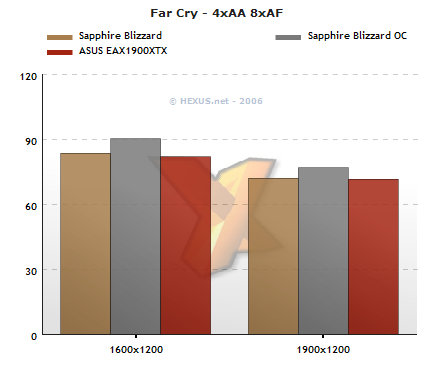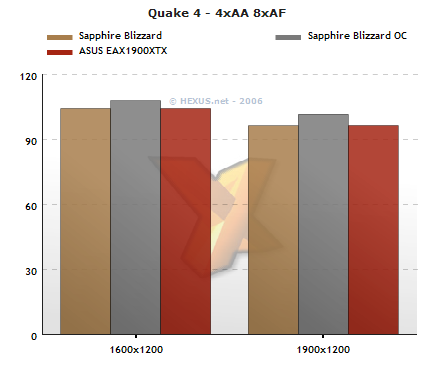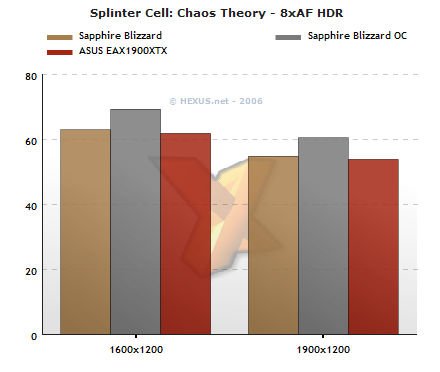Gaming, Overclocking and Thermal Performances
We ran a triplet of games tests on the TOXIC to see if it could compete with a direct opponent from ASUS, and to see how it scaled with its maximum overclocked frequencies.If you want to see how XTX does against NVIDIA opposition, click here where we make that particular comparison, one which the XTX soundly wins at the resolutions and settings an X1900 XTX is likely to be played at.
The results are as follows.
Far Cry

The Sapphire matches the ASUS, both at the same clocks. When overclocked (709/864 remember) it pulls ahead by just under 10%.
Quake 4

Quake 4 enjoys a boost when overclocked, but to the tune of a bare few percent (less than the overclock would suggest), indicating limitations elsewhere in the system.
Splinter Cell: Chaos Theory

The gains are tangible in Splinter Cell with HDR mode on, the TOXIC's overclocks translating into expected performance increases. The ASUS is matched at stock clocks.
Overclocking and Thermal performances
Compared to an air-cooled X1900 XTX, the TOXIC is significantly quieter for roughly the same reported temperatures that the air cooler is able to produce.And as you can see the sample also overclocked nicely enough, while still retaining the silence. All overclocks were obtained with the fan in Low mode (2000rpm, supposed 18dBA) and in terms of temperatures, the Low mode didn't mean the hardware got any hotter. Rather we found that heat took longer to disappear from the system after a load condition had been halted. In High mode the heat build-up goes away quicker.









